Cereals into pasture —potential for degraded pastures in winter rainfall environments
Pasture cropping, which was pioneered in northern NSW, involves sowing winter crops into summer active perennial pastures to achieve year-round production. In southwest Victoria however, the predominantly winter rainfall and winter active pastures mean that autumn sown cereals compete with pasture growth.
The Glenelg BestWool/BestLamb group identified potential to use the concept of pasture cropping to increase winter feed production and improve degraded phalaris pastures, by oversowing with an oat crop. The idea was that allowing phalaris to run to head, controlling weeds and increasing fertility, would offer regenerative benefits for phalaris plants whilst also producing crop yield and, potentially, winter grazing. Phalaris also uses soil moisture, which may reduce the impact of waterlogging on crops.
Between 2014 and 2016, the group hosted 14 sites where Quoll® oats were sown into degraded phalaris pastures. They measured the impact on phalaris plant counts, ground cover and oat yields. A further five sites were set up in 2015 to 2016 to measure livestock production gains though winter grazing of the pasture oversown with crop.
The process of cropping into pasture
Agronomic and chemical advice was provided by SMS Rural in Horsham. Paddocks were spray topped in the spring before sowing, and again in May to knock out weeds and suppress phalaris. Quoll® oats (treated with insecticide) were sown in May at 100kg per hectare with 100kg per hectare MAP (monoammonium phosphate) fertiliser. Post emergent herbicides were used in July to remove onion grass and broadleaf weeds. The total cost of chemicals, seed, fertiliser, contractors and harvest was approximately $300 per hectare for each site.
Crop yields and pasture improvement
The demonstrations coincided with the region's driest two consecutive years on record (2014 and 2015), which were then followed by the wettest winter on record (2016). Despite challenging conditions, oat yields ranged from 2 to 5.5t per hectare. Grain yield reductions from winter grazing ranged from 0 to 1.25t per hectare. The larger yield reductions occurred in 2016, caused by a combination of waterlogging (which has a greater effect on grazed plants with smaller leaf area) and later grazing into early growth stage 31. Grazing past growth stage 30 can damage the embryo ear and reduce yields.
On average, phalaris groundcover increased slightly (by around 10%) in the oversown paddocks — however some plant damage was caused at sowing by tynes. Pastures were observed to be significantly cleaner after the crop phase as a result of the chemical regime and fertiliser application. Paddocks that started with very low phalaris groundcover (less than 10%) before the demonstration, showed no measurable increase after the crop phase and, without resowing, were exposed to reinfestation with weeds.
Winter feed
The crop/pasture sites considerably outperformed the pasture — only sites in feed quality and growth in the middle of winter. Metabolisable energy (ME), digestibility and crude protein levels of the crop/pasture were higher than in pasture only (Table 1). Protein levels were well above stock needs in both paddock treatments.
Table 1: Feed quality and production in July (before grazing), 2015 and 2016
Year |
| Growth rate (kg dry matter/ha/day) | Digestibility of dry matter | Metabolisable energy | Crude Protein |
2015 | crop/pasture | not measured | 90-92 | 13.8-14.3 | 29.2-29.5 |
2015 | pasture | not measured | 78 | 11.7 | 23.5 |
2016 | crop/pasture | 47-60 | 78-82 | 11.7-12.5 | 18.8-26.7 |
2016 | pasture | 12 | 70-77 | 10.4-11.7 | 17.8-25.5 |
Livestock production
A portion of each paddock oversown with Quoll® oats was grazed for 21 days in winter. Livestock growth rates were measured on the crop/pasture and on a nearby pasture paddock, at the same stocking rate, using animals from the same mob.
Weight gains both for ewe lambs (Fig. 1) and one year old bulls (Fig. 2) were significantly higher on the crop/pasture than on the pasture only.

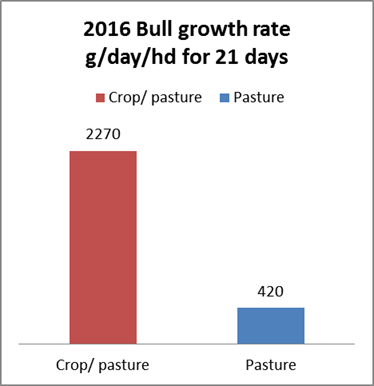
Did it pay?
On livestock and grain yield measurements alone, sowing crop into pasture and grazing it in winter is extremely favourable. However, the value decreases when the cost of lost grazing through the year is included.
All things considered, cropping into a rundown pasture with winter grazing, stacked up as a good option for the group, producing an average gross margin of $89/ha above the status quo. This included benefits from stubble grazing, but did include any additional benefits from cleaner pastures and slightly increased phalaris ground cover.
The large variability in gross margins between sites and years (range -$79 per hectare to +$194 per hectare) indicates the sensitivity of this system to seasonal conditions and grain and livestock prices. The lower gross margins were calculated in 2016 and were caused by a significant drop in grain prices (despite higher grain yields that year).
Summary
- Pasture cropping was useful for pasture cleaning and increasing phalaris groundcover
- The system offered flexibility because the crop can be winter grazed, harvested, cut for hay or silage or spring and summer grazed and the pasture is available the following year
- Pastures with less than 10% phalaris may not realise sufficient benefits from pasture cropping and should be considered for renovation instead
- Livestock weight gains were significantly higher on crop/pasture than on pasture over winter
The following conditions were considered optimal for this system:
- Low - moderate fertility and well drained paddock
- Reasonable phalaris base
- Pasture cleaning required for annual weeds or onion grass
- Strong oat price
- Good seasonal outlook
- need to improve winter feed
- of livestock to utilise winter feed
Degraded phalaris pastures can be further improved using strategic fertiliser and grazing management (see Further Reading).
Acknowledgements
The demonstrations were funded by the Glenelg Hopkins CMA through the commonwealth's National Landcare Program, Agriculture Victoria and Meat & Livestock Australia. Thank you to the Glenelg BestWool/BestLamb group, particularly the site hosts and group co-ordinator, Tim Leeming.
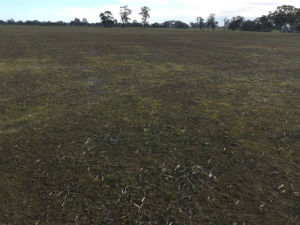
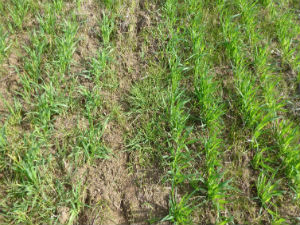
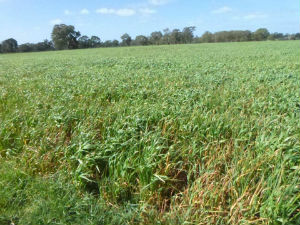
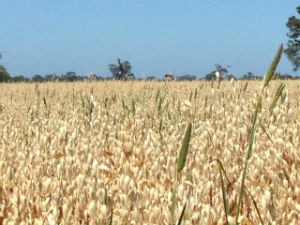
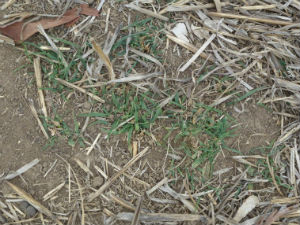
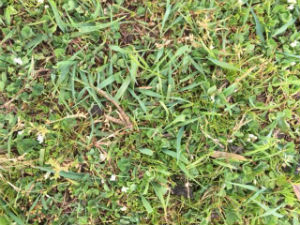
Further reading
Nicholson, C . (no date). Assessing and regenerating pastures after the drought . Information session No. 5. Woady Yaloak Catchment Group.
Broadford Grazing Experiment
Warn, L. Sargeant, K. 2013; EverGraze